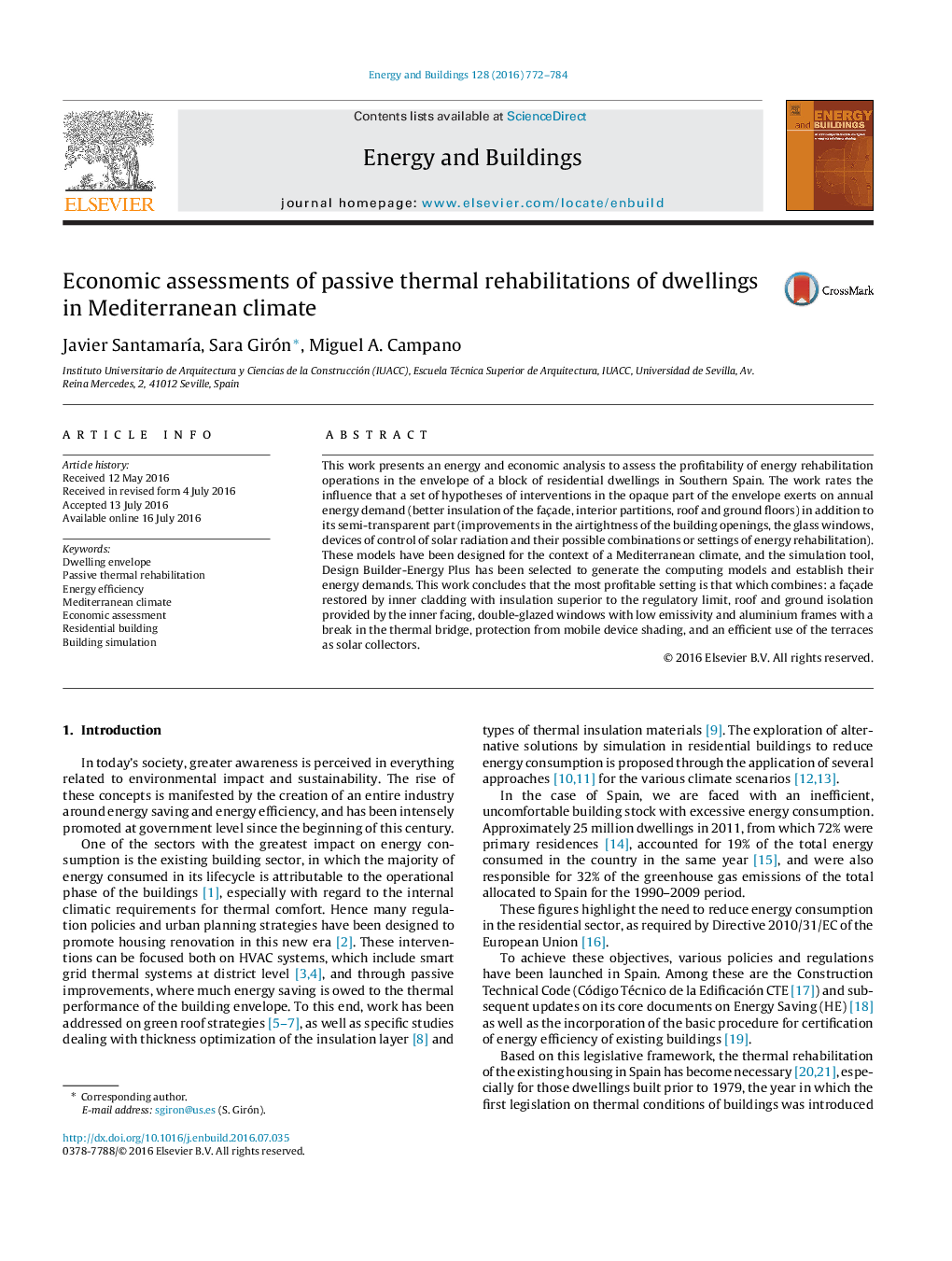| Article ID | Journal | Published Year | Pages | File Type |
|---|---|---|---|---|
| 6729900 | Energy and Buildings | 2016 | 13 Pages |
Abstract
This work presents an energy and economic analysis to assess the profitability of energy rehabilitation operations in the envelope of a block of residential dwellings in Southern Spain. The work rates the influence that a set of hypotheses of interventions in the opaque part of the envelope exerts on annual energy demand (better insulation of the façade, interior partitions, roof and ground floors) in addition to its semi-transparent part (improvements in the airtightness of the building openings, the glass windows, devices of control of solar radiation and their possible combinations or settings of energy rehabilitation). These models have been designed for the context of a Mediterranean climate, and the simulation tool, Design Builder-Energy Plus has been selected to generate the computing models and establish their energy demands. This work concludes that the most profitable setting is that which combines: a façade restored by inner cladding with insulation superior to the regulatory limit, roof and ground isolation provided by the inner facing, double-glazed windows with low emissivity and aluminium frames with a break in the thermal bridge, protection from mobile device shading, and an efficient use of the terraces as solar collectors.
Keywords
Related Topics
Physical Sciences and Engineering
Energy
Renewable Energy, Sustainability and the Environment
Authors
Javier SantamarÃa, Sara Girón, Miguel A. Campano,
